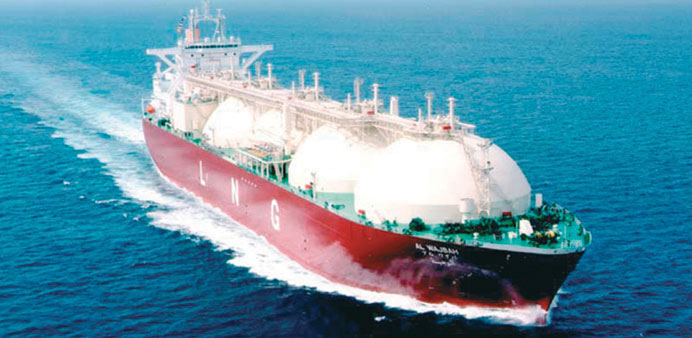Qatar’s foreign trade surplus more than halved to QR43.26bn in the second quarter (Q2) of 2015 but fast-growing Asia was, by far, the largest contributor with the region accounting for 98.4% of the total, according to official figures.
The country’s total exports had plunged 39.3% to QR72.61bn; while imports surged 10.3% to QR29.35bn, the Ministry of Development Planning and Statistics’ figures revealed.
The European Union accounted for 0.4% of Qatar’s foreign merchandise trade surplus, followed by the Gulf Co-operation Council (GCC).
Shrinkage in total exports was mainly on lower shipments of mineral fuels, lubricants and related materials and manufactured goods; even as those of chemical and related products were on the rise.
Higher imports was on account of increased shipments of machinery and transport equipment and manufactured goods; while there was decrease in the imports of inedible crude materials.
During Q2 2015, Asia was the principal destination of Qatar’s exports and the first origin of Qatar’s imports, representing 71.3% and 31.3% respectively, followed by the European Union (11.9% and 28.7%) and the GCC (9.8% and 15.7%).
The foreign merchandise trade balance with Asia amounted to QR42.6bn in Q2 2015, while the total trade (exports plus imports) amounted to QR60.9bn.
Among Asia, South Korea was the major destination of exports with QR14.2bn (19.5% of Qatar’s total exports), followed by Japan QR13.6bn (18.7%) and India with QR8.5bn (11.8%).
On the other hand, China was the principal origin of the imports with QR2.9bn (9.7% of Qatar’s imports), followed by Japan with QR1.8bn (6.3%) and India with QR1.1bn (3.9%).
During this period, exports to Asia were dominated by liquefied natural gas (LNG), crude oil, condensates, propane, butane, naphtha, polyethylene, aluminum alloys, urea whether or not in aqueous solution, unwrought aluminum (not alloyed), methanol, vinyl chloride, sulphur and ether derivatives.
Imports from Asia comprised principally vehicles, telephones for cellular networks, semi-milled or wholly milled rice whether or not polished or glazed, portable digital automatic data processing machines, electric cables, machinery with a 360 degree revolving super structure, air conditioning machines, tubes, pipes and hollow profiles.
The foreign merchandise trade balance with the European Union amounted to QR0.2bn in Q2 2015, while total trade amounted to QR17bn.
Within the European Union, the UK was the major destination in Q2 this year with exports of QR3.1bn (4.3% of Qatar’s total exports), followed by Italy with QR1.5bn (2.1%) and Belgium with QR1.1bn (1.6%).
Imports from Germany were at the top of the European countries with QR2bn (6.9% of Qatar’s imports), followed by the UK with QR1.7bn (5.7%) and Italy with QR1.3bn (4.4%).
Exports to the European Union were mainly of liquefied natural gas, polyethylene, jet fuel, acetylene phenyl, halogenated olefins, helium and melamine; while imports were vehicles, parts of airplanes or helicopters, medical solutions and parts for turbo jets or turbo propellers.
The foreign merchandise trade balance with the GCC countries registered a surplus of QR2.4bn in Q2 2015, while the total trade was QR11.8bn.
Among the GCC, the UAE was the first partner country reporting exports of QR5.1bn (7.1% of Qatar’s total exports) and imports of QR2.7bn (9.3% of Qatar’s imports); followed by Saudi Arabia QR1.1bn and QR1.3bn (1.6% and 4.3%).
Exports to the GCC comprised principally natural gas, LNG, condensates, aluminum alloys, helium, bars and rods of iron or non-alloy steel and fuel for ships; while imports included pebbles, gravel, broken or crushed stone, cooper wire, iron ores and concentrates, yogurt, jewelry of gold, electric cables, steel scaffoldings props, platforms and fittings.
In Q2, 2015, trade surpluses were registered with non-Arab African countries, other American and Oceania by QR0.5bn (1.1%) each, and other Arab countries QR0.4bn (0.9%); even as deficit was recorded with the US of QR2.9bn and other European countries (not in the European Union) of QR0.9bn.

